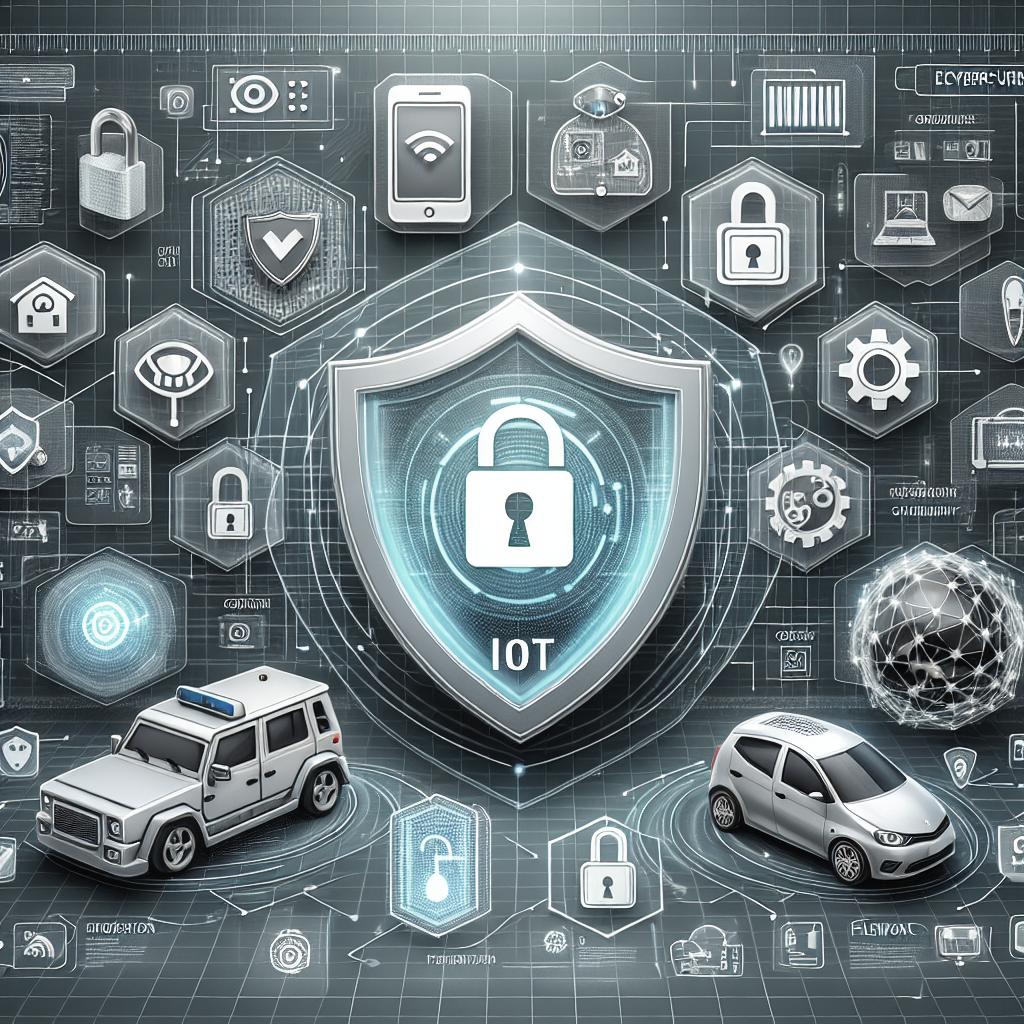“`html
The Importance of Cybersecurity in IoT
In the digital age, the Internet of Things (IoT) represents a transformative technological advancement, permeating our daily lives through connected devices. As IoT continues to integrate seamlessly into sectors such as healthcare, transportation, and smart homes, the significance of cybersecurity in safeguarding these networks becomes paramount. This article explores the growing IoT threat landscape, the necessity of securing IoT communications, and the emerging practices like the Zero Trust Framework. We delve into the importance of real-time endpoint protection and employing a secure protocol stack to mitigate potential risks. By understanding these components, stakeholders and individuals can take proactive measures to protect their IoT ecosystems from cyber threats.
The Growing IoT Threat Landscape
The rapid expansion of IoT devices globally has created an attractive target for cybercriminals. From everyday consumer gadgets like smart thermostats and wearables to complex industrial control systems, the sheer volume and variety of IoT devices contribute to a sprawling threat landscape. These devices often lack stringent security measures, making them vulnerable entry points for hackers looking to infiltrate networks.
Moreover, many IoT devices collect and transmit sensitive data, including personal information, which if compromised, can lead to significant privacy invasions and financial repercussions. The decentralized nature of IoT ecosystems presents further challenges as it complicates the implementation of comprehensive security protocols across various devices and platforms. As a result, understanding and addressing these vulnerabilities are crucial to bolstering overall security.
Cybercriminals leverage these vulnerabilities to execute various attacks, such as Distributed Denial of Service (DDoS) attacks, ransomware, and data breaches. Consequently, organizations incorporating IoT technologies must prioritize the identification and mitigation of these threats to maintain the integrity of their systems and protect user data.
The Need for Securing IoT Communications
To ensure robust IoT security, securing communications between IoT devices is essential. As these devices share data across networks, it is imperative to implement encryption protocols that protect data in transit. Encryption acts as a deterrent to unauthorized parties attempting to intercept data exchanges, making the information unreadable to potential attackers.
Authentication and authorization mechanisms play a significant role in securing IoT communications. Implementing strong authentication measures ensures that only authorized devices can access the network, reducing the likelihood of adversaries gaining entry. Additionally, employing authorization ensures that devices have the appropriate permissions to access specific data and functions within the network.
Furthermore, securing data at both the device level and the network level is crucial. With the projected increase in IoT devices, employing advanced communication security protocols will not only protect data but also foster user trust and acceptance of IoT technologies.
Zero Trust Framework
With the growing complexity of IoT ecosystems, the Zero Trust Framework emerges as a valuable approach for cybersecurity. Unlike traditional security models that operate on the assumption of trust within a network perimeter, Zero Trust verifies and validates every entity accessing the network, irrespective of their location.
The Zero Trust approach mandates strict user authentication and device verification before granting access, minimizing the risk of unauthorized access. Continuous monitoring and validation of network traffic ensure that abnormal behaviors are promptly detected, further safeguarding IoT systems.
Organizations adopting the Zero Trust framework not only strengthen their security posture but also enhance their ability to respond to potential threats more swiftly. By limiting access only to verified entities, organizations can minimize the surface area for potential attacks, safeguarding both data and network integrity.
Real-time Endpoint Protection
Real-time endpoint protection is a crucial component in securing IoT environments where devices constantly interact and exchange data. Endpoint protection encompasses a range of security measures designed to protect individual devices from malicious activities and unauthorized access.
One of the primary techniques involves deploying antivirus and anti-malware solutions that provide continuous monitoring and detection of malicious files or activities. Complementing these measures are intrusion detection and prevention systems that identify and mitigate threats before they can compromise device security.
Furthermore, the implementation of automated patch management systems ensures devices remain updated with the latest security patches, counteracting vulnerabilities. This proactive approach strengthens overall IoT security, reinforcing defenses against evolving cyber threats.
Secure Protocol Stack
The implementation of a secure protocol stack is vital to providing a robust security foundation for IoT devices. A secure protocol stack encompasses a suite of protocols that define the secure transmission of data across networks.
Protocols such as Transport Layer Security (TLS) and Datagram Transport Layer Security (DTLS) enable encrypted data exchange, ensuring confidentiality and integrity of data in transit. These protocols offer protection against eavesdropping and tampering, which are prevalent threats in IoT environments.
Moreover, the use of lightweight cryptographic algorithms designed for resource-constrained IoT devices further bolsters the security of communications. By adhering to standardized secure communication protocols, organizations can create trust in their IoT ecosystems, paving the way for broader adoption and innovation.
Next Steps
| Section | Summary |
|---|---|
| The Growing IoT Threat Landscape | The proliferation of IoT devices increases vulnerabilities, necessitating awareness of potential threats, such as DDoS attacks, to enhance security measures. |
| The Need for Securing IoT Communications | Encrypted communication channels, robust authentication, and authorization protocols are critical for safeguarding data in transit and ensuring network integrity. |
| Zero Trust Framework | Zero Trust enhances security by continuously verifying users and devices irrespective of their location, thus limiting unauthorized access and strengthening threat response capabilities. |
| Real-time Endpoint Protection | Ensuring real-time protection involves employing antivirus, patch management, and intrusion detection systems to secure individual IoT devices from malicious activities. |
| Secure Protocol Stack | Utilizing secure protocols, such as TLS and DTLS, and lightweight cryptography, fortifies communication channels, ensuring secure and trusted data exchanges in IoT networks. |
Looking ahead, the incorporation of these security strategies is essential in building resilient IoT environments. As IoT technology continues to evolve and permeate different industries, collaboration between stakeholders and continued focus on cybersecurity innovations will shape the future of IoT security.
“`


